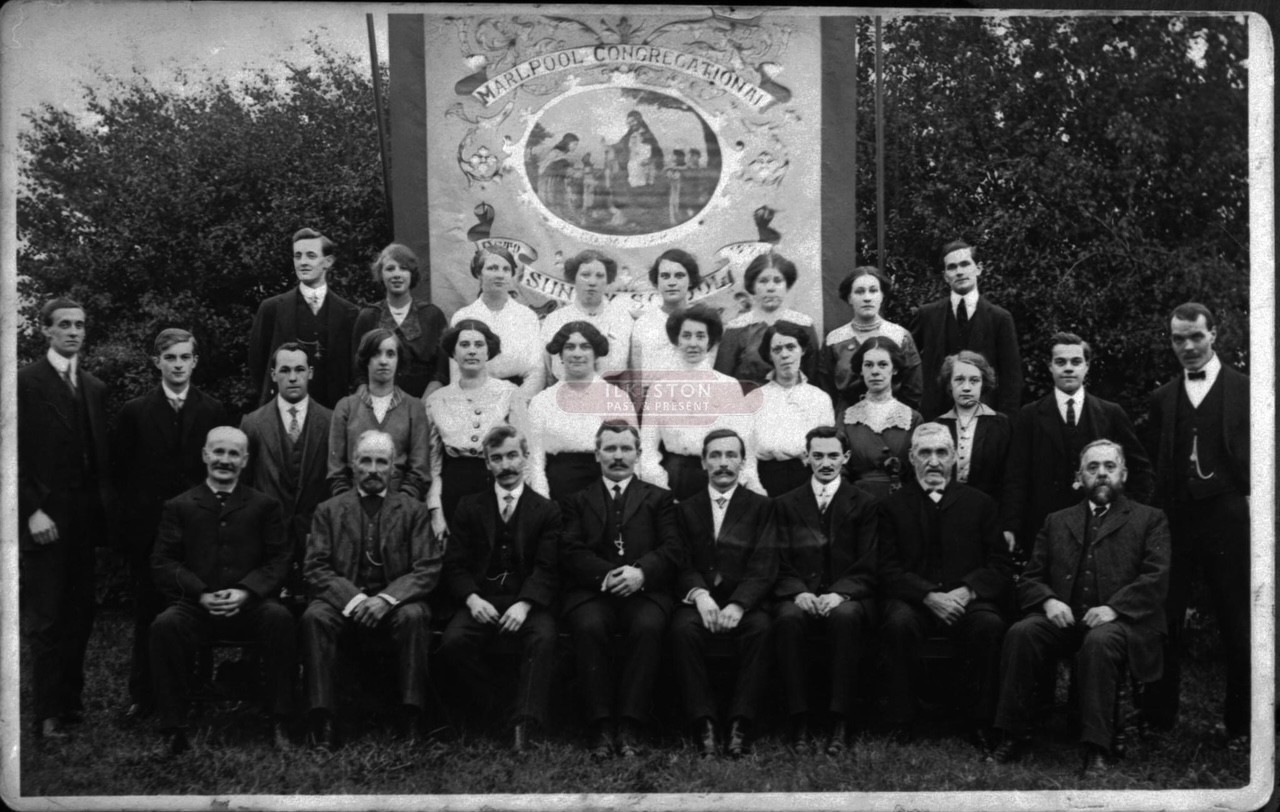Click in these links for pictures and information.

February 2004 saw the opening of a new United Reformed Church on Chapel Street, Marlpool. This replaced a much earlier building. This is just a little of the history of the Church.
At the end of the 18th century, non-conformist groups were already meeting in the area, at private houses both at Tagg Hill and at Mill Hay.
Around 1800, the Rev. Joshua Shaw, of the Independent Chapel at Ilkeston, brought these two groups together, and they met at the premises of Benjamin Hardy, a town-centre draper. The group outgrew its meeting place and decided to build a chapel in the area, eventually buying the land on what is now Chapel Street in 1820.
It took two years for the meeting house to be completed, and the new building was used both for services and as a Sunday School. A Minister, Charles Ellis of Belper, was appointed in 1825.
By 1827, the meeting house was itself too small, and a chapel was built on the same site, being named the Mount Zion Independent Chapel at Marlpool.
In the 1840's the chapel was extended to have a gallery installed by the then Minister, Edward Leighton. At this time the Sunday School had over 300 pupils and 33 teachers!
Rev. Leighton also instigated the first choir, having decided that those who possessed either "actual or imagined" vocal powers should be trained to sing. Such a success was this choir that they were given two rows of seats immediately behind the pulpit, and space was also provided for the band, consisting of 6 or 7 instruments.
In 1856, at the end of the Crimean War, Rev Leighton led the Marlpool contingent in a Day of Thanksgiving in Heanor, with a procession of some 450 members going from the Marlpool Church to Heanor.
In 1878, the chapel was fitted with gas lighting, the height of luxury at the time! This was followed by a fund-raising campaign for a new heating system. The next project, began in 1889, was to raise funds for a pipe-organ, though this took until 1896 - the funds were used instead for feeding local children during the Great Coal Strike of 1893. This was a recurring theme, and the coal strikes of the 1920's again saw the Chapel feeding over 300 children a day. Improvements to the building continued, with, for example, electric lighting being added in 1928.
A major benefactor from the 1920's was Vic Hallam, who was elected a Deacon in 1923. He contributed to the building of the old Church hall and a manse was also built.
But, all good things must come to an end, and in 2002, it was decided that the building was beyond economic repair, (dry rot having been 'eradicated' a number of times! )and that a new Church was required. The congregation had no funds but went forward in faith, determined to build not only a new church but also a community hall and kitchen facilities on the site.
All the fixtures and fittings were auctioned off, including the balcony and pulpit with steps, pews etc and everything unsold was put into store. Fundraising, led by Jim Sumner, had already raised a substantial amount and Jim was able to attract lottery funding for the building of the community facilities. Building stopped for a while when a grave was discovered. The building was eventually reoriented and building continued but at extra cost. A bid for funding to the Coalfields regeneration Trust was successful and when the building was opened at the end of January 2004, the church community had no outstanding debt.
During the period when the church community had no building to worship in, they were offered the use of the Marlpool Catholic Church for morning services and they joined with Marlpool All Saints for evening services. It is ironic that once our new Church was built , the Catholic Church was sold for building land and the Catholic congregation who had been so helpful to us have split up and gone to other local churches.
The congregation settled into the new building very quickly - it felt like home straight away. During the time of change the congregation grew instead of shrinking as was feared, and it continues to grow to this day.